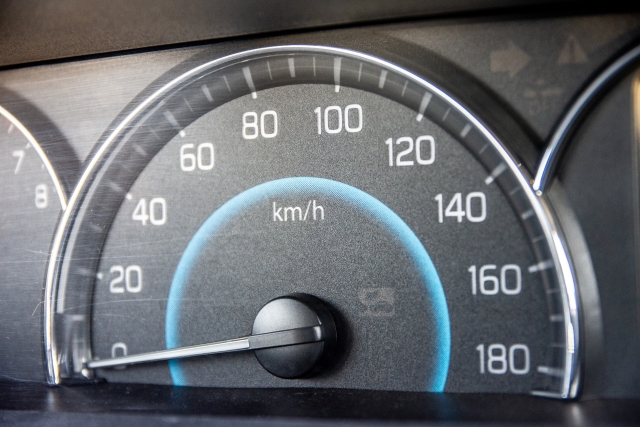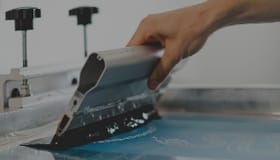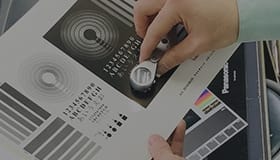Product overview
HAS ink is highly resistant nameplate inks used for screen printing on instrument panels and various display panels for automobiles and home appliances. They are particularly suitable for applications requiring heat resistance and alcohol resistance. It has particularly excellent adhesion to polycarbonate and can produce printed materials with high surface hardness.
- Solvent type ink

Application
- Nameplates for automobile, home appliance, and various display boards
-
Automobile, Motorcycle
-
Home Appliance (IoT)
-
Smartphone, Tablet, Smart watch
-
Sensor
-
Game
-
Others
Features, Function
- Solves the problem of cracks and haze on plastic covers caused by residual solvents emitted from printed materials on automobile instrument panels.
- Excellent resistance for alcohol and heat.
- Excellent weather resistant colors available.
- Forming, workability
- Multi color setting
Substrate
- Polycarbonate, acrylic, soft & rigid PVC, and ABS.
- PC
- PMMA
- PVC
- ABS
Dilution
- G-001 SOLVENT(fast dry), G-002 SOLVENT(Standard), G-003 SOLVENT (slow), and G-004 (extra slow)
- Dilution: 20 to 30%
Promoter
- SM-40 DEFOAMER 2%(For anti-foam and improvement in leveling)
Recommended cleaner
- Screen Cleaner L2
Mesh
- T 200 to 300 mesh(Coverage would be 20 to 28m2/kg at 250 mesh)
Drying
- 80℃ 60 min
- Overprint
Each layer 60 to 80℃ 10 min
Final layer 80℃ 60 min
Standard colors
-
000 MEDIUM
-
001 VICTORIA
-
010 VICTORIA
-
002 EXTENDER
-
033 GEL RETARDER
-
121C OPAQUE SCARLET
-
161 SCARLET
-
163 RED
-
166 RED
-
168 SCARLET
-
177 OPAQUE RED
-
182 RED
-
190 BRILLIANT RED
-
221 YELLOW
-
240 LIGHT YELLOW
-
246 LIGHT YELLOW
-
263 REDDISH YELLOW
-
271 OPAQUE LIGHT YELLOW
-
277 OPAQUE REDDISH YELLOW
-
391C OPAQUE BLUE
-
577 OPAQUE ORANGE
-
581 MAGENTA
-
611 WHITE
-
611C OPAQUE WHITE
-
797C OPAQUE GREEN
-
821 VIOLET
-
911C OPAQUE BLACK
-
911 BLACK
- *Gel Retarder improves ink flow through the gauze and prevents ink sagging, improves printability. Therefore, it is effective for printing fine lines, metallic colors, and transparent colors. Use Gel Retarder with 10 to 20% dilution by decreasing the amount of Solvent.
- *Transparent color (MK) settings for color separation (TC) are also available.
Caution
- Adhesion test must be done before printing as quality of plastic may differ depending on manufacturers or lots. It is also recommended to wipe surface of the printing part with alcohol to prevent defective print due to static electricity and insufficient adhesion due to plasticizer and additive floating.
- Checking before commercialization: Adhesion and resistance properties may change due to differences in substrates, processes, printing and drying conditions. Be sure to check the adhesiveness and resistance properties before mass production printing
- Ink shelf life: 24 months from production date, unopened.
Safety
- UN No.: 1210
- UN Classification: Class 3 Flammable Liquids (Flash point is over 23 Degree C)
Handling
- Use safety gloves and eyeglasses to protect skin and eyes. If the ink comes in contact with skin, wash with soap and plenty of water (or lukewarm water) and consult with a doctor.
- Containers should be closed tightly after use and stored in a cool and dark place.
- SDS is available upon request. Please request a copy and read it carefully before handling the products.
Resistance
| Test item | Test conditions | Test results |
|---|---|---|
| Adhesion | JIS K 5600-5-6 (Cross-cut test): ISO 2409: 1mm interval 6X6 cuts, cellophane tape peel | 0(no peel) |
| Heat | JISK5600-6-3:ISO 3248: 130℃, 48 hrs. check appearance and peeling off from the substrate. | No defect |
| Hot water | JIS K 5600-6-2: ISO 2812-2, Soak 48 hrs. in 40℃ warm water, then check appearance and peeling off from the substrate. | No defect |
| Alcohol | Gakushin scrub tester, cotton soaked ethanol, 200g weight, 200 back and forth. Then check color fade. | No defect |
| Scrub | Gakushin scrub tester, with cotton, 500g weight, 500 back and forth, check color fade. | No defect |
| Bend test | JIS K 5600-5-1: ISO 1519(Cylindrical Mandrel)2mm dia. Check crack. | No defect |
| Falling-weight test | JIS K 5600-5-3: Dupont Impulse Tester, drop 300g weight from 30cm height, check appearance. | No defect |
| Punching | Cut with a punch, check cut edges. | No defect |
| Gloss level | Gross meter(60 °/ 911 C OPAQUE BLACK) | No defect |
| Blocking | ISO 11341: 10 kg/cm2 , 40℃ , 24hours | No defect |
| Accelerated weathering | JIS K5600 7-7 ISO 11341, Radiant energy 60W/m2, Black panel temp. 63+/-3℃, raining rate 18min/120min, 1000 hrs. check appearance and peeling. | (700-1500h) No defect |
Test Condition
- Test conditions 【HAS- 911C Opaque Black, 911 Black, Medium】 【G-002 Solvent 20%】 【60℃ 30min, natural dry 168 hrs.】 【T 250】 【Substrate:PC】
- Above test was conducted after leaving above printed materials for 24 hours at a room temperature.
- Above resistance test results are measured results in our laboratory and they are not guaranteed values.
- Information contained in this catalog may change without prior notice.
FAQ
-
What types of forming are there?
-
Typically, there are Vacuum Molding, Air-pressurized Molding, Press Molding, and High Pressure Molding.
-
What is screen printing?
-
Screen printing is a type of stencil printing which uses a technique of duplicating the image from a design made on mesh stencils.
When printing ink goes through the mesh, it transfers the image onto the substrate material. Other than air and water, any substrate materials are printable. Not only flat surfaces, but also curved, specially shaped, and molded products are suitable for screen printing.
-
When over-printed with a black ink, we often have pinholes. How can we eliminate the pinholes?
-
See the list below for causes of pinholes:
1. The first layer is too thin (less than 5 µ)
2. Too much dilution of the ink (more than 20%)
3. Too much squeegee pressure
4. Under layer is pale colored, such as a medium based color
5. Any combination of these causes -
What are the standard drying conditions?
-
In multi-color printing, primary drying would be done after each color is printed. After the final color is printed, the final drying should be done according to the conditions listed in the catalog. If the color printed ink is a “two-pot” ink the final drying should be done after the printing of the Binder.
-
Why there is “Primary” drying and “Final” drying?
-
Residual solvent at the time of injection may cause ink flow and insufficient adhesion. To prevent these malfunctions, residual solvent must be evaporated through a “Final” drying process.
-
When we extended the primary drying time, pinholes and cracks resulted. How can we eliminate them?
-
With one-pot inks, if the primary drying time is too long, the solvent of second ink penetrates the first color layer and makes pinholes.
With two-pot inks, if the primary drying time is too long, a curing process occurs. Thus when the second color is printed, the first color ink layer wrinkles and looks like cracks. The countermeasure in either case would be to shorten the primary drying time.

